When we arrive at Pete’s Farm in Rangiora, New Zealand, just outside Christchurch, Gaye is the first to greet us. There’s a twinkle in her eye and she shakes our hands warmly. Pete is not far behind with a hearty, “Welcome, Welcome!” He looks like a sheep farmer to me, if sheep farmers have a look. He has a ruddy face and an easy smile.
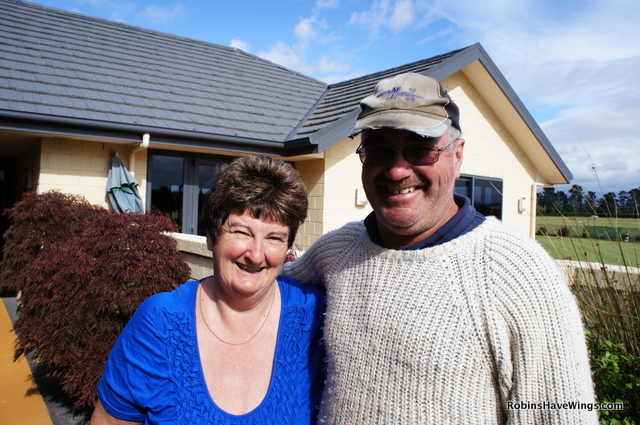
Gaye immediately shows us to our room with a huge picture window looking out over the back of their 100 km property dotted with their woolly charges lazily nibbling grass. Our bathroom is just down the hall, she says, and she tells us that we are free to relax in the den and family room of the house already occupied by cozy-looking couches and a pair of matching barcaloungers. There are more picture windows and patios for scenic daydreaming. She tells us that “tea” will be at 7; that’s what they call dinner in this part of the world.
After settling into our room, we decide to take a stroll around the farm, eyeing a group of sheep just beyond the backyard. Tanya wants to go into their pen to pet them, but I’m a little leery. I think we should wait until we’ve got a chaperone. What if sheep bite? We see some sheep a bit farther up the road that are close to the fence of their enclosure and I suggest getting closer to them, but as we approach they give us a hard side-eye and scamper away. Tanya entreats them to come back, but they are having no parts of us. I manage to get some good close ups of a little lamb that seems to know no better and its mom keeps her eyes trained on us.
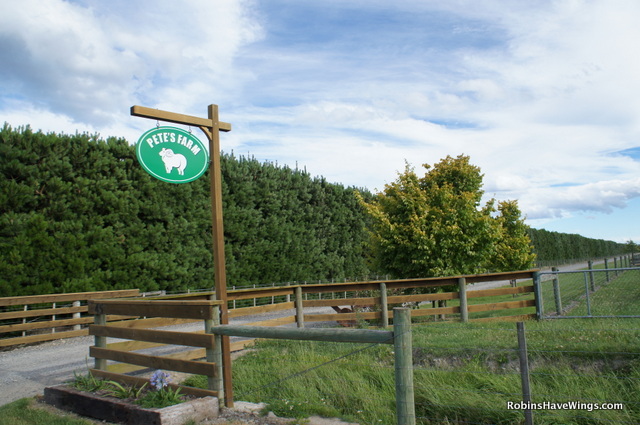
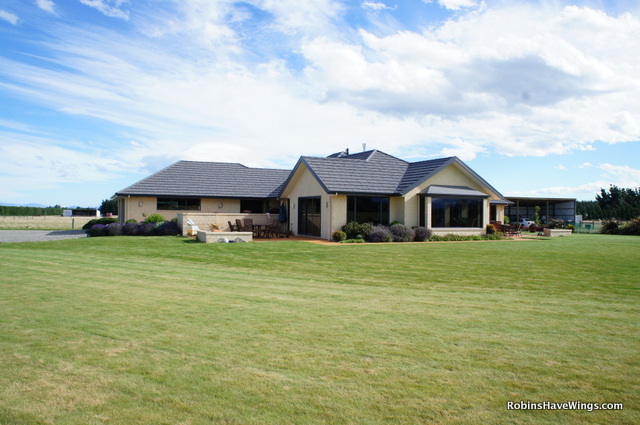
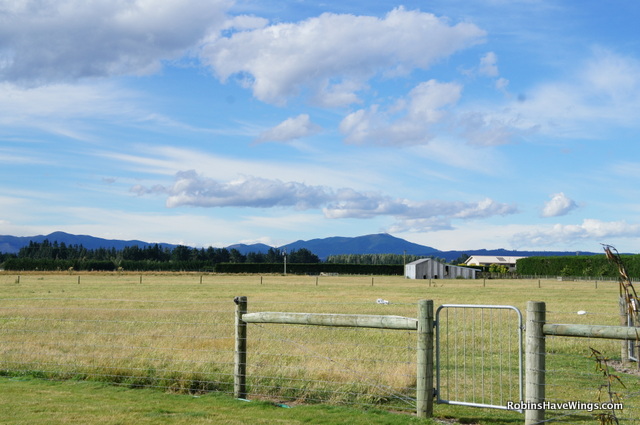
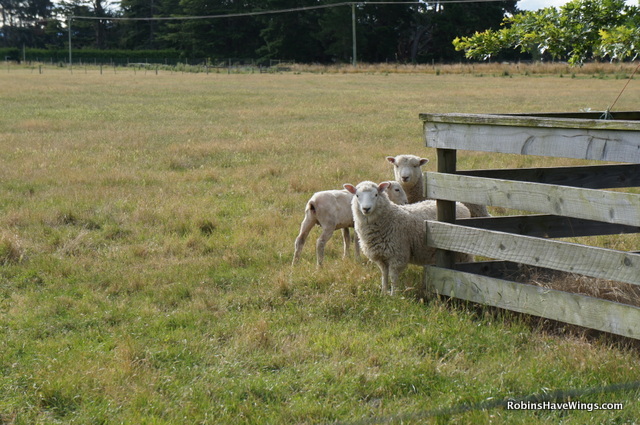
Seeing that we may not have any luck with the sheep, we turn back toward to the back of the house where we spot the alpacas. If there is anything cuter than a sheep, it might be an alpaca. Tanya wants in with them, too. But having worked at Animal Planet, I’m all too familiar with shows like “When Animals Attack,” and I can see one of us getting a swift kick to the face from a cute alpaca, which wouldn’t be very cute at all. I also know that these animals are related to llamas and llamas have a nasty habit of spitting. So, again, I urge erring on the side of caution.
Just when it seems that I’ve taken all the fun out of our farm exploration, Pete appears and says, “Wanna see some sheep?” We squeal, “Yes!” He instructs us to put on “gum boots” before we go out to protect our shoes from sheep poo. He has a blue box of greyish pellets in his hand and he takes us to the pen just beyond the yard. As it turns out, I had no reason to fear these sheep. Pete shakes the blue box and the sheep come running towards us like loyal little dogs. They break into a wild gallop. It’s hilarious. We feed them the pellets that Pete calls “nuts” made of barley and other grains. They greedily scarf them from our hands, looking for more as soon as one handful is gone. The healthiest eater and largest of the bunch is a mama sheep who gave birth to a set of quadruplets, a rarity in the world of sheep birthing, according to Pete. Most sheep give birth to only one lamb, maybe two. I think she deserves more nuts that the rest. She’s one of 180 mama sheep on the farm. There are over 300 in Pete’s entire herd. He’s also got 4 or 5 cows for beef not dairy and the 10 alpacas out back.
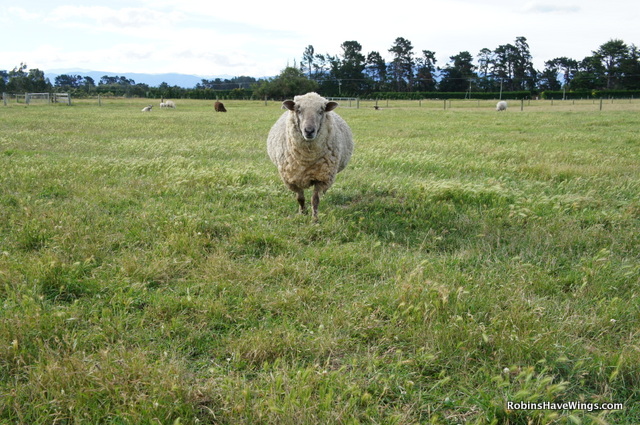
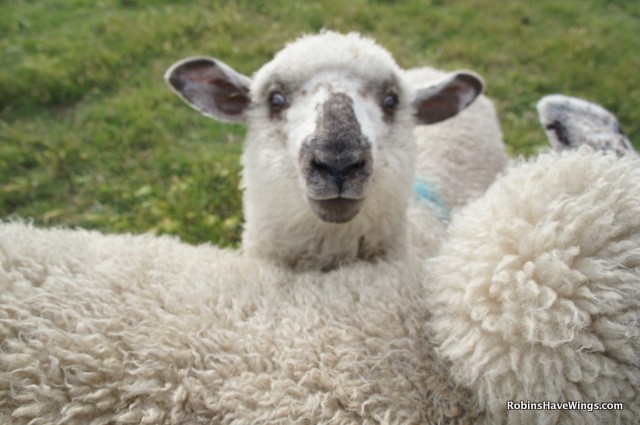
I think Pete’s got a pretty good set up here, and he agrees, admitting that he loves his life of sheering sheep and welcoming American, Chinese, Japanese, Singaporean and Malaysian sheep-curious guests into his no fuss life. Meanwhile, Tanya seems to be squeezing the life out of a sheep nearby. She’s got a death grip on its neck. I’m sure the sheep is thinking, “Just let go and give me more of those nuts, lady.” She’s also cooing at them. Shearing a sheep was at the top Tanya’s list of things to do in New Zealand. I think it may have even ranked higher than any of the Lord of the Rings experiences we’ve done so far. But Pete’s seen at least one other person more excited by the prospect of close proximity to a sheep. He tells us the story of a divorced Malaysian woman that visited the farm and insisted upon taking a photo with the sheep in her wedding dress. We surmise that she was trading in her husband for the sheep. Tanya didn’t pack a wedding dress for this trip, but ever since I told her that we could to a farm stay in New Zealand, she kept asking, do you think they’ll let me shear a sheep?
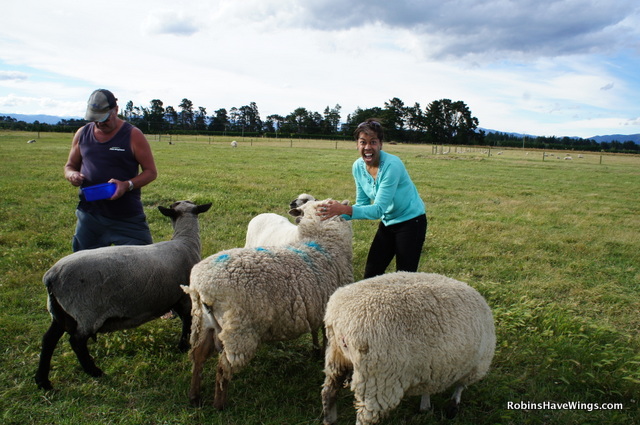
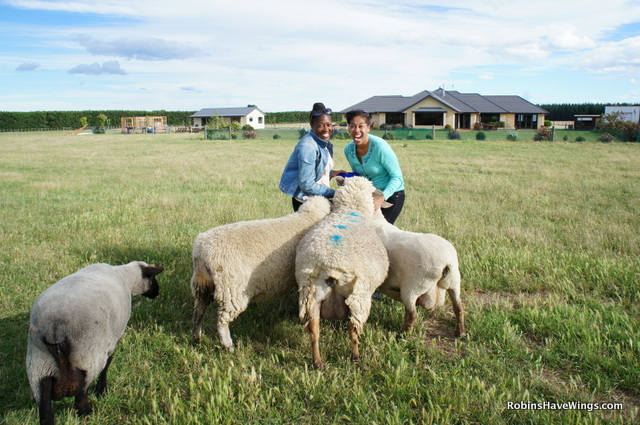
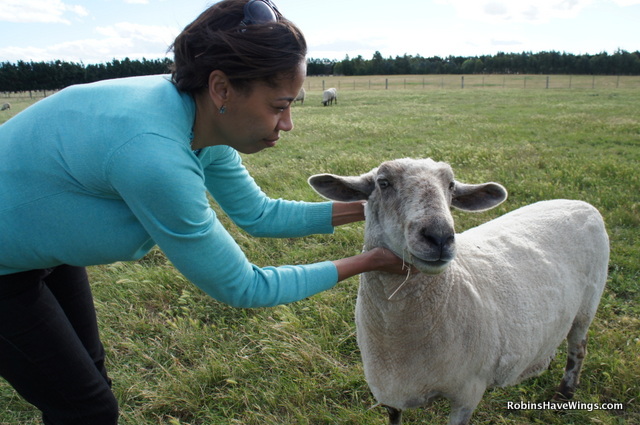
At Pete’s Farm, they let you shear a sheep. In fact you learn to shear from Pete himself, a champion sheep shearer who could shear 200 sheep a day in his youth, before his back began to protest. He made a dollar per sheep, pocketing $200 daily. He remembers those days fondly over breakfast on the patio the next morning. He has a far-off look in his eye and a wistful grin on his face as he tells us that he left home at 15 to take up with a sheep-shearing outfit that went from farm to farm. They slept on the farm where they were to work and the farmer’s wife made the shearers a simple breakfast of porridge in the mornings and the farmer, called a cockey, would give them beer in the evenings after dinner. There was lots of beer drinking at sheep shearing competitions, too. Pete described them as rowdy events where the goal was to shear a sheep in a minute or less and advance through regional competitions.
Then it was time for us to try sheep shearing for ourselves. With gumboots on we march out into the pasture, this time with canine companions Jessie and Meg. Jessie’s job is to round up the sheep and bring them to the shearing shed at the far end of the property. I think Meg is just there for enthusiastic support. Pete ties her to a nearby fence and she goes into a mad barking frenzy, knowing what’s about the happen. Pete sends Jess out to collect the sheep. She half-heartedly yaps and circles them a couple of times, but it’s clear that she needs further encouragement. Pete gets out after telling her to get ‘em. Jess gets in gear and gives chase. The sheep clump together, running as bunch to get away from the black and white beast harassing them. They go one way, then the other, finding they have no choice but to head into the shed’s enclosure with Jess nipping at their heels. See Jess do her thing:
These are the same sheep that gave us the side-eye the other day and it’s understandable given what we’ve just seen. They know something is about to happen as they murmur and restlessly mingle in their pen. Pete explains that foaling happens in August, New Zealand’s winter, when it’s quite cold. The next big event on the farm is when the lambs are sold around Christmas for, well, you can guess. It’s a hard truth. This is how Pete keeps his sheep population to 300. The rest are for shearing, which mainly happens in the spring. But we’ll get to shear a sheep right now.
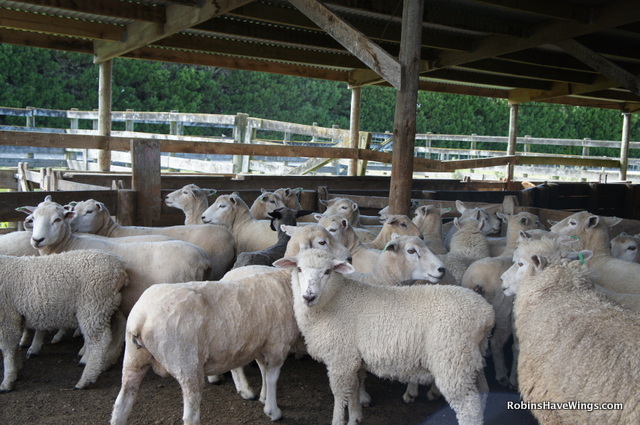
The sheep have migrated to the back of the shed and Pete asks if we want to catch a sheep. I’m game, but Tanya hesitates. She’s thinking she’ll have to run around the yard and chase one down. Once she realizes that she’ll just have to grab one from the small selection of sheep bumping into one another in the back of the shed, she’s turns into Xena, warrior sheep-shearing princess. She sets her sights on one terrified lamb that tries to hide behind its woolly brethren to escape her clutches, to no avail. He put up a good fight, but Tanya is determined. Pete tells her to put the sheep on his butt. He’ll submit after that. Tanya’s face turns red as she tries to bring the lamb down, but she manages to force his hind parts to the floor and then she has to drag it out through the clumping sheep for its shearing. Pete’s encouraging her along the way, “Good, on ya,” he says.
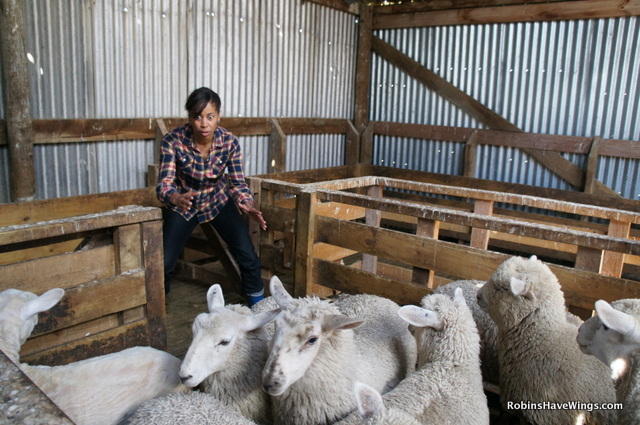
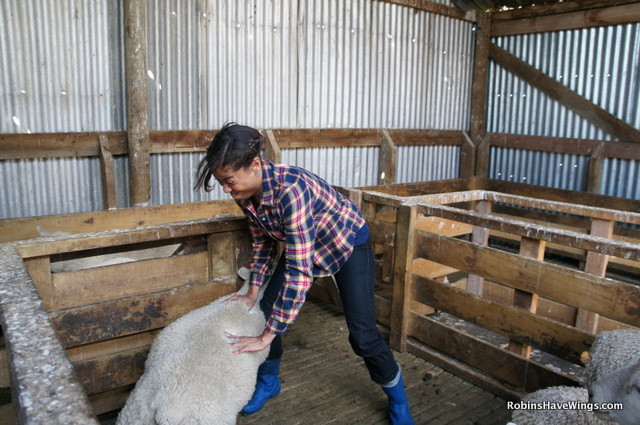
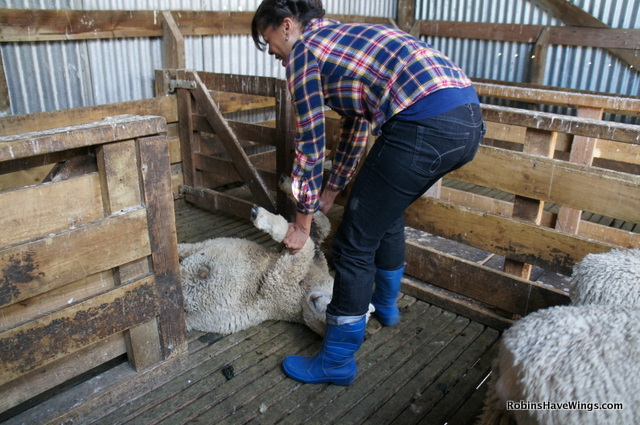
Pete’s already shown us the shears up close, not unlike the shears used to shave human hair, attached to string that he pulls to start them with a whir. Before we can start though, we have to name our little lamb-shearing victim and I choose the name Larry. It just seemed to fit. Pete starts by showing us the correct way to shear a sheep, putting the shears as close to the skin as possible and Larry seems as docile as, well, a lamb. But I think Larry starts to have flashbacks of his capture when Tanya gets ahold of the shears and things go slightly awry. See what happened:
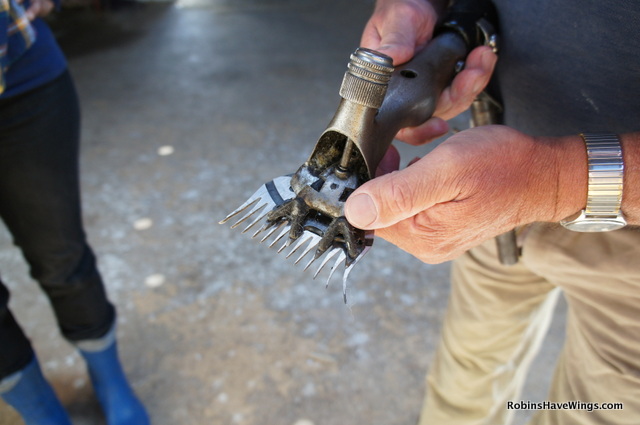
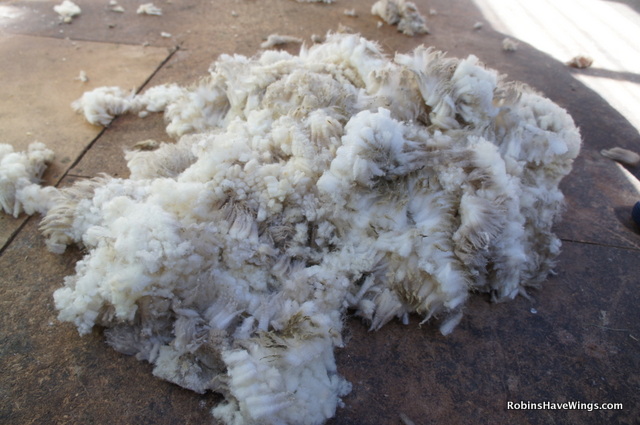
Things turn out OK. We manage to actually shear a sheep without slaughtering it and we feel pretty good about ourselves. As our video explains, we only got about 1.5 kgs of wool from Larry, but most sheep produce about 5 kg of wool at $5 NZ per kg. That’s not a lot of money. The alpacas are the cash cows, so to speak, of the farm. Their hair can pull in $25 per kg. They only produce 2 kgs of hair, but their hair is sought after around the world for its softness. When we finally meet the alpacas, they rush us in similar fashion to the sheep because we are holding that blue box of pellets. Their round, long-lashed eyes blink at us expectantly. One pushy alpaca doesn’t wait for us feed him and tries to force his nose directly into the box. Eventually, they get bored with the pellets and plop down on folded legs into the grass.
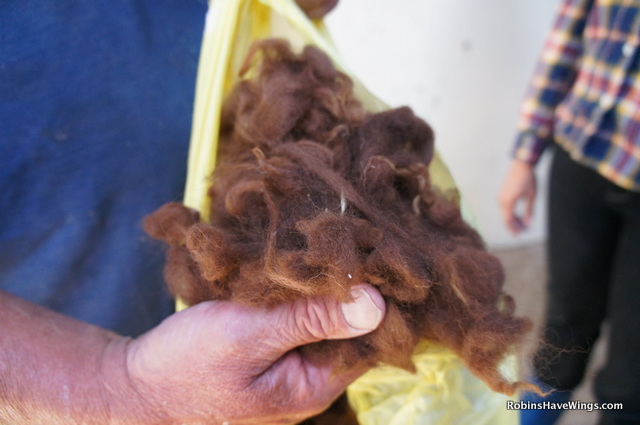
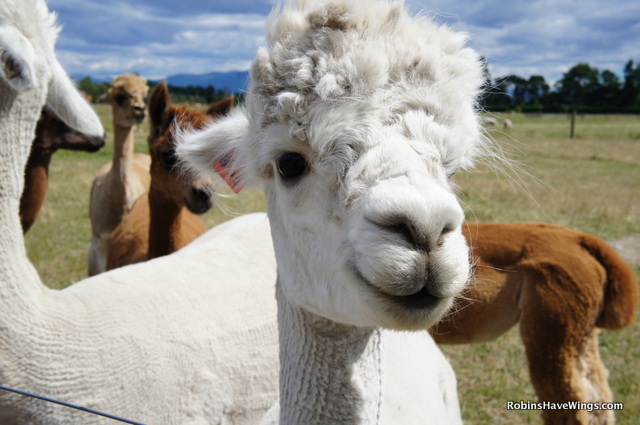
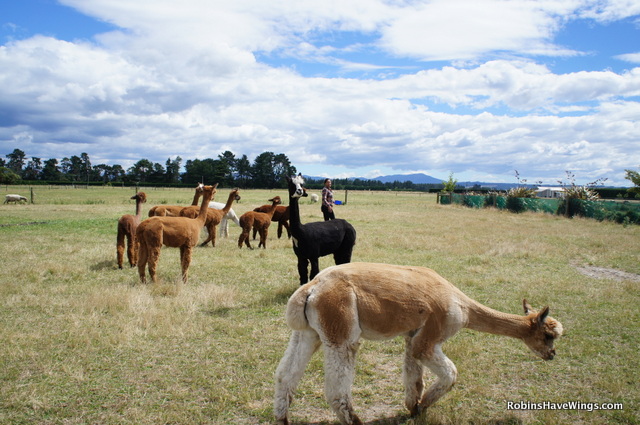
Soon, it’s time for our own dinner and somehow, Pete has found time to prepare a delicious barbeque for us with lamb chops, of course, steaks and kebabs. Gaye adds to the spread with potatoes, pasta salad and green salad, along with a lovely Cabernet-Merlot. It’s the time that we spend over meals with Pete, Gaye and their family that makes us feel most at home on the farm. We talk about our common interests, mainly travel. Pete and Gaye have traveled to San Francisco, Las Vegas and the Grand Canyon in the US and they are planning to go on a cruise of the Caribbean later this year, leaving from Ft. Lauderdale. They ask us where they should go in Florida when their cruise ends. Tanya, the New Orleans native, makes a pitch for her hometown. I have to pitch my birthplace Mobile, AL. There’s Destin and Pensacola along the way. We also talk US politics from gun violence to the economy.
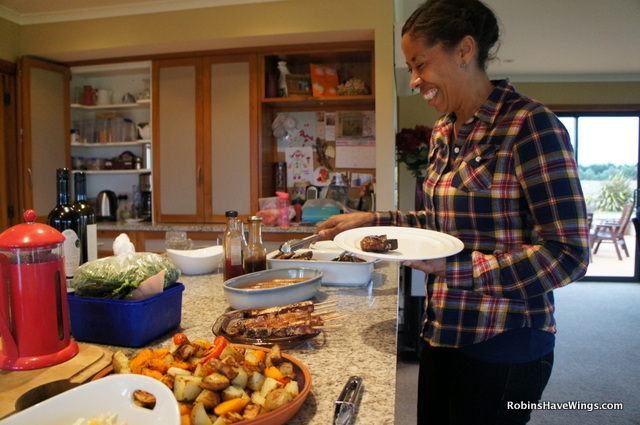
One might make the mistake of thinking that Pete and Gaye are provincial, isolated on this farm in Rangiora. But they’d be horribly mistaken. The world passes through Pete and Gaye’s doorstep almost daily with each guest that passes through. (On our last day, we meet newlyweds and a group of girlfriends from Singapore.) Then, they get out and see it, too. Pete told us once while feeding the sheep that he and Gaye traveled to Japan for the wedding of one of their guests. He talked of how graciously they were treated. Tanya and I know that this is just a reflection of how Pete and Gaye treat their guests. Tanya extends her own heart-felt invitation over dinner on our last night. If Pete and Gaye ever make it to Washington, DC, they’ll get a home-cooked meal and our graciousness in return. Being in their cozy Kiwi home was just what we needed before own return home.
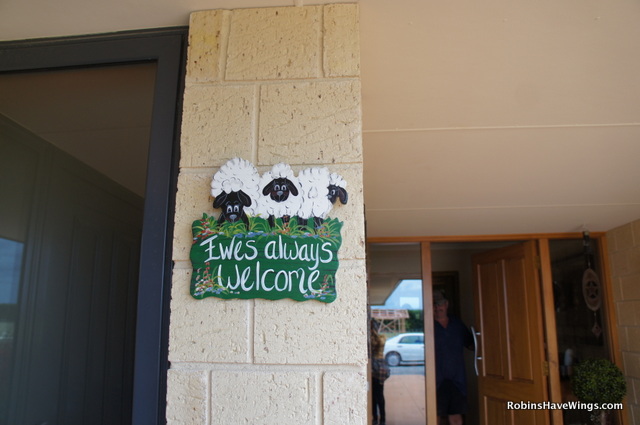
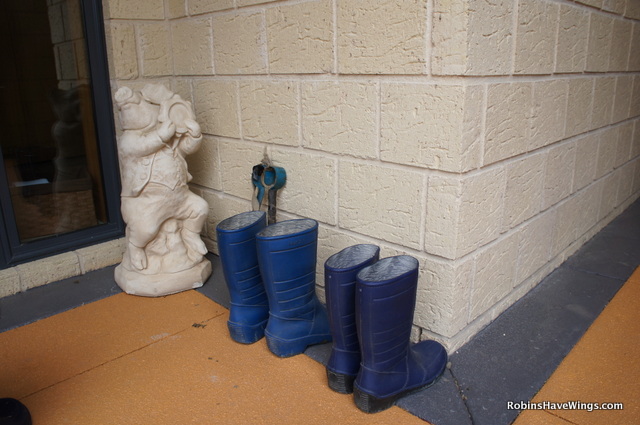
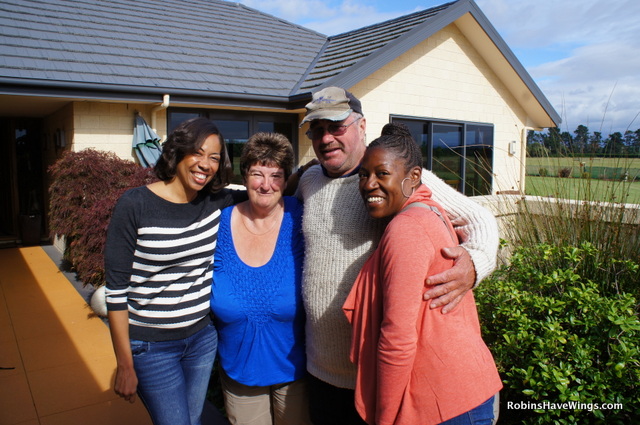
Robin! This is an awesome blog post. Videos were an excellent touch. I really felt like I was there minus the sheers. Lol. I want to go to New Zealand now more than ever. XO
Thanks, Rani! Had fun playing around with the video. We didn’t even see half of New Zealand. I may need to go back!